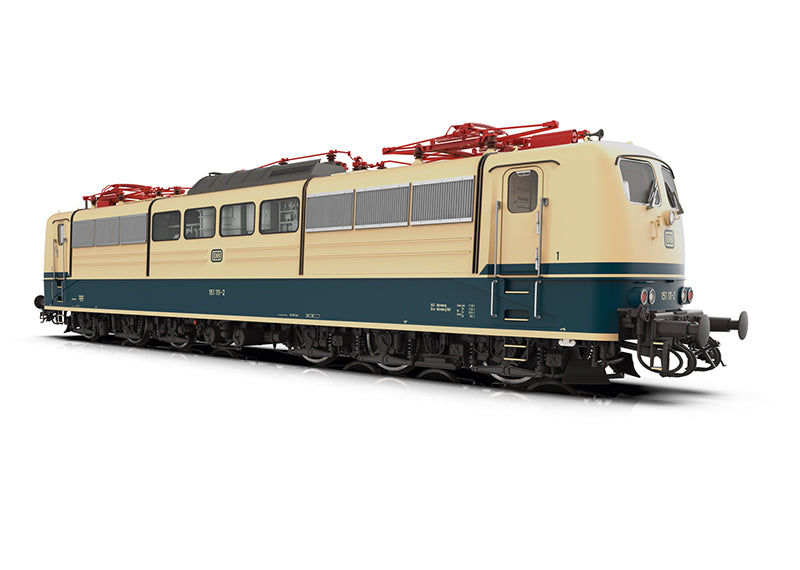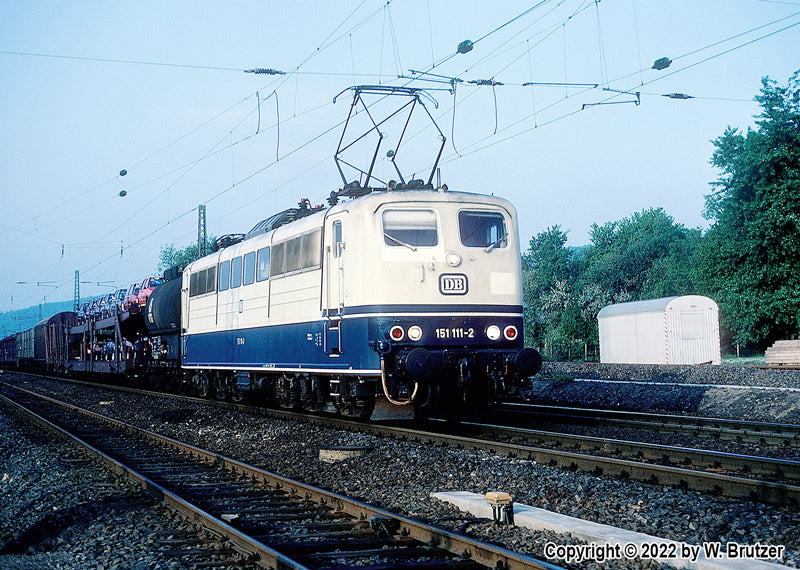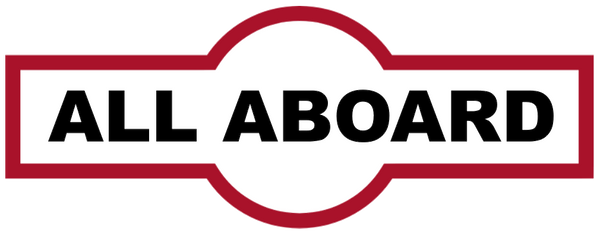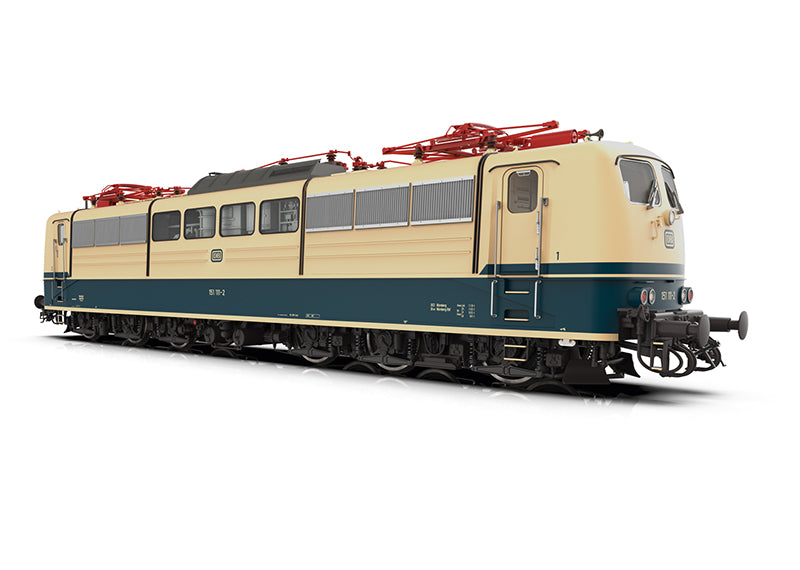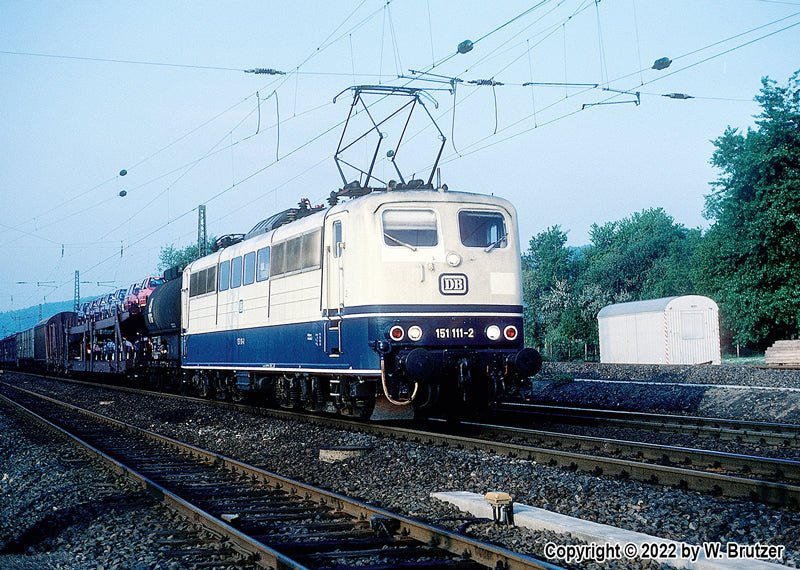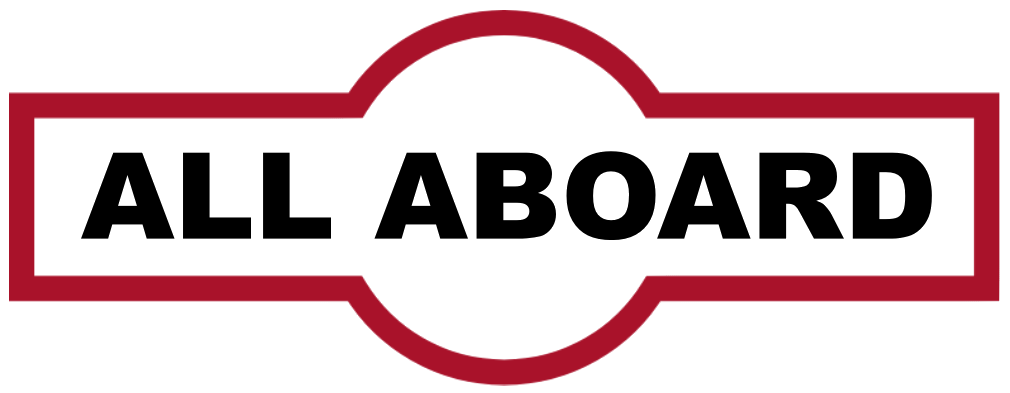Marklin 55252: Class 151 Electric Locomotive
Marklin 55252: Class 151 Electric Locomotive
Available For Pre-Order
Couldn't load pickup availability
Highlights
- Complete highly detailed new tooling constructed of die-cast zinc and including separately applied parts of centrifugally cast brass.
- Highly detailed advanced model.
- Pantographs that can be raised and lowered with servomotors in digital operation.
- Digital remote controlled Telex coupler front and rear included.
- Extremely extensive sound features.
- Engineer control desk lighting.
- Current buffer.
- Prototype couplers for front and rear included.
By 1977, Krupp, Henschel, Krauss-Maffei, AEG, Siemens, and BBC built 170 units of the class 151 as the last new DB development for six-axle electric locomotives, which were initially used all over West Germany and even in some cases pulling passenger trains. Starting with road number 151 076, they then all gleamed in the new paint scheme of ocean blue / ivory and road number 151 073 was also thus delivered beforehand. Between 1976 and 1981, road numbers 151 089-099 and 114-122 were equipped with automatic couplers (Unicoupler) and then ran for many years, mostly double-headed, pulling heavy ore trains on the routings Hamburg – Beddingen (5,700 metric tons), Venlo – Dillingen (5,130 metric tons), and Moers – Linz (3,220 metric tons).
Prototype: German Federal Railroad (DB) class 151 heavy freight locomotive. Road number 151 111-2. Ocean blue / light ivory paint scheme. The locomotive looks as it did in 1978.
Model: The locomotive is completely new tooling. The running gear with the main frame and locomotive body are constructed of die-cast zinc. The locomotive has many separately applied parts of centrifugally cast brass. It also has an mfx digital decoder with up to 32 functions, a built-in buffer capacitor with adjustable parameters, controlled high efficiency propulsion, and extensive sound functions such as running sounds, vent blowers, locomotive whistle, other announcements, and warnings. The locomotive can be operated with AC, DC, Märklin Digital, and DCC. It has powerful motors with propulsion to all axles. The current buffers have adjustable parameters. There are pantographs that can be raised and lowered with servomotors in digital operation. The white and red LED headlights / marker lights change over with the direction of travel, will work in conventional operation, and can be controlled digitally. The engine room lighting can be controlled. There is white LED lighting in the cabs that changes over with the direction of travel as well as approaching train lamps, which change over with the direction of travel. The cab doors can be opened, there are interior details, and one cab has a figure of a locomotive engineer. There is also engineer control desk lighting. The locomotive has metal grab irons and many other separately applied parts such as signs, windshield wipers, whistle, and much more. The buffer beams have sprung buffers and separately applied brake lines. The locomotive has a factory-installed, remote controlled Telex coupler on the rear and a prototype coupler on the front. Each of the couplers can be replaced by the other type of coupler (included with the locomotive).
Minimum radius for operation is 1,020 mm / 40-3/16. Length over the buffers 60.9 cm / 24.Weight approximately 6.9 kilograms / 15 pounds 3 ounces.
Share
